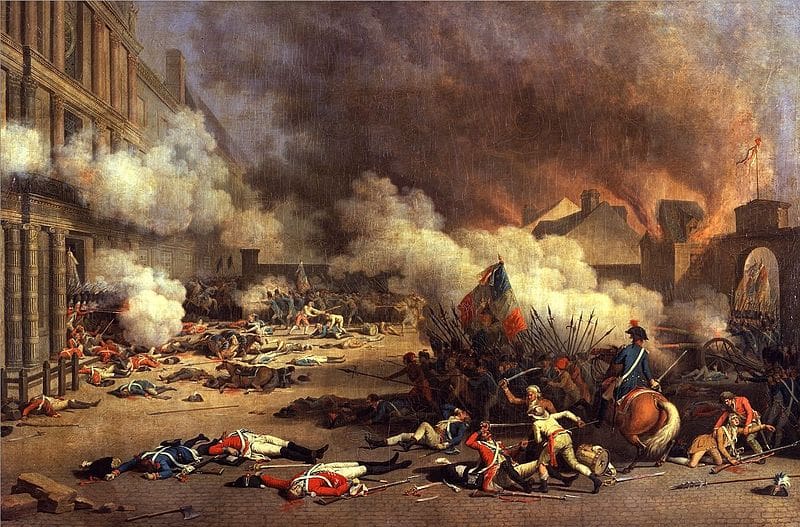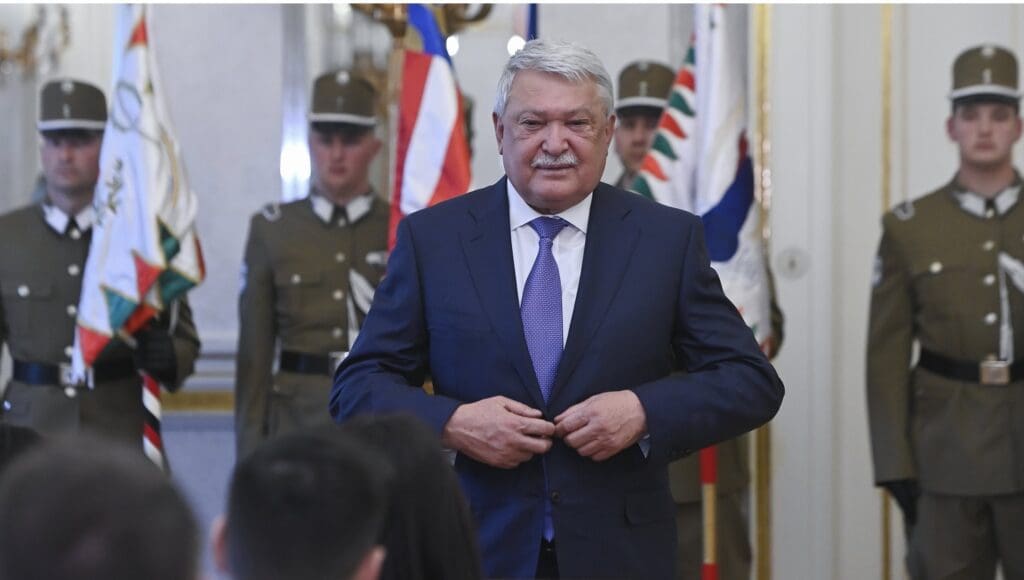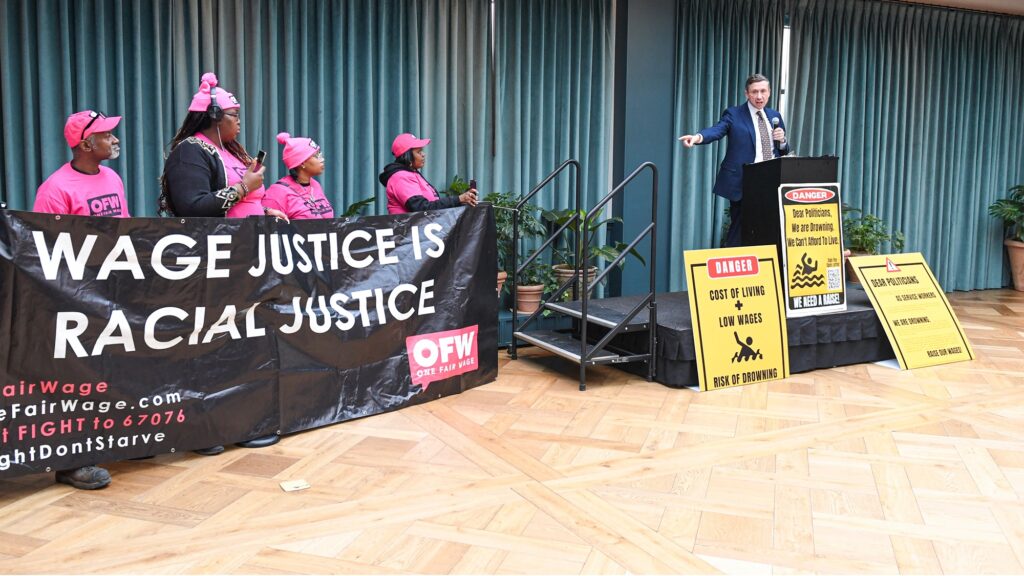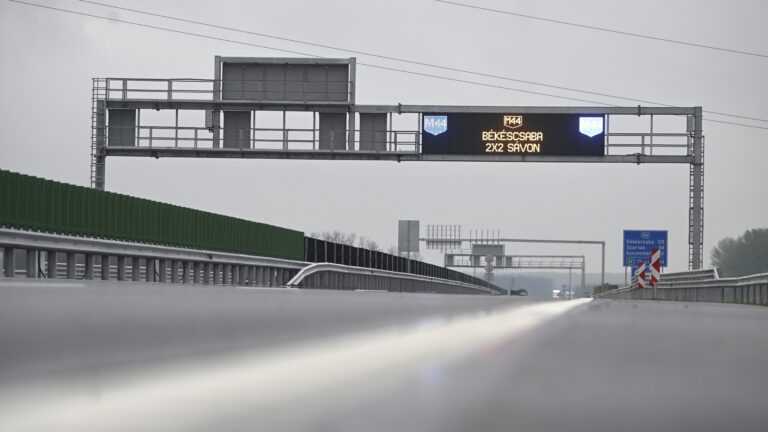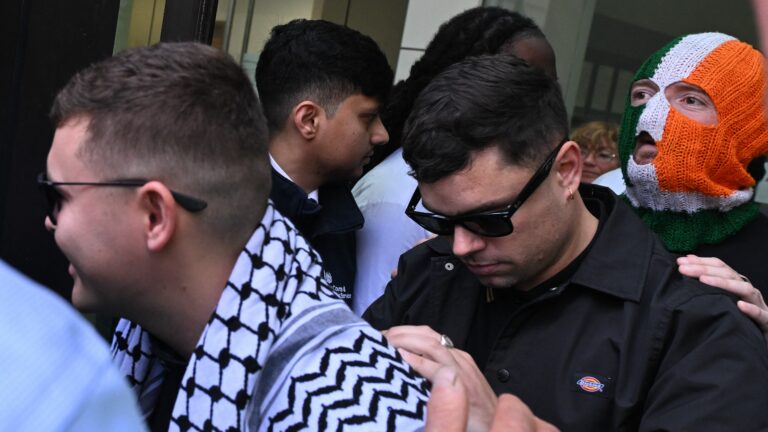‘In fact, violence defined by the political left has played a prominent role in the modern era since the French and Russian revolutions. Violence, like the midwife of all old societies, which, freely after Karl Marx, is pregnant with a new society, is a kind of “law” for the left’, writes Monika Deutz-Schroeder and Klaus Schroeder in their book. The two political experts’ book on the violence of the political left – “Der Kampf ist nicht zu Ende” – is a real curiosity on the book market. The authors provide concise summary of a hitherto little examined topic – from the French Revolution through the Soviet era, to the present day.
There have been many books and analyses of right-wing violence since the Second World War. The main reason for this is obviously the atrocities of German National Socialism, which continue to haunt right-wing political thought to this day. However, Monika Deutz-Schroeder and Klaus Schroeder point out in their work that, unfortunately, left-wing violence has also claimed many victims and caused great damage in history.
Google gives fifteen times more results for right-wing violence than its counterpart
The book by the two German political scientists, entitled Der Kampf ist nicht zu Ende – Geschichte und Aktualität linker Gewalt – “The fight is not over – History and topicality of left-wing violence” – has received relatively little international attention, although it is based despite its thorough research and analysis. The authors stress at the beginning of the book that the aim is not to compare left-wing and right-wing violence. Although there are aspects along which the ideology and practice of violence by representatives of both political sides can be compared, such a comprehensive analysis has not yet been undertaken in academia. One of the first chapters of the thesis shows that right-wing violence is a much more common topic in various libraries and websites; Google gives fifteen times more results for right-wing violence than its counterpart. ‘Confrontational violence, i.e. violent clashes between right-wing and left-wing actors, mostly originates from the left’, state the authors, who argue that right-wing violence tends to be spontaneous. Left-wing violence on the other hand, is aimed at changing a political system and is therefore “progressive” for left-wing perpetrators. What both phenomena have in common is that both left-wing and right-wing perpetrators know that their violent attacks can cause life-threatening injuries to their opponents.
The different chapters of the book cover different historical periods, starting with the French Revolution. A fascinating and important aspect of the analysis is a more in-depth presentation of the ideology of violence of the German left-wing movements.
“Do You Want Revolution without Revolution?”
The book begins its historical analysis with a detailed summary of the events of the French Revolution. One of the central figures of the French Revolution was Robespierre, who went from being a gifted politician to the leader of a reign of terror. Revolutionary violence against the feudal regime during the French Revolution was transformed into what was essentially left-wing state violence to secure the power of a small group. Although the Revolution was based on Enlightenment ideas, the majority of those involved were motivated by social reasons.
A later event was the September Massacre in Paris, which took place in early September 1792. France was then at war with Prussia and Austria, whose troops were already stationed on French territory. Danton, himself a moderate among the revolutionaries, made a rousing speech calling for the defeat of the enemy. An angry mob of mostly petty bourgeoisie murdered 1200 prison inmates, supposed “conspirators” and enemies of the people who were in reality, largely politically inactive criminals. Among the political prisoners, the primary victims of lynchings were priests who refused to take the oath. Jacobin Robespierre sought to whitewash the murders with the following reference: ‘Do you want revolution without revolution? Could any people ever shake off the yoke of a tyrant at such a price?’ It was to this violence that he coined the phrase “violence progressive”, which to this day remains a central justification for leftist violence: ‘Terror is nothing but swift and merciless justice. It is a manifestation of virtue. Terror is not some special principle of democracy, but arises from its fundamental truths, which must be the most urgent concern of the heart of the country.’ For Robespierre, virtue is a “sublime sentiment” which demands the primacy of the public interest over individual interests. In terror, therefore, this virtue is ultimately expressed and it means nothing less than “swift” and “strict” justice.
The revolutionary terror and the series of executions intensified in the summer of 1793, and within a little more than a year Robespierre, who had previously been a staunch advocate of revolutionary violence was himself the victim of a spiral of executions: ‘Do you want revolution without revolution?’, he asked provocatively. In the summer of 1794, some 1,300 people were the victims of mass executions. The government troops on the revolutionary side took brutal action against the supporters of the counter-revolution, who launched uprisings in many regions of France. Prisoners were no longer executed by guillotine, but were tied up and placed in front of pre-dug graves and blown to pieces by cannon fire. The civil war raged most brutally in the Vendée. The revolutionary forces drowned their opponents in the Loire River, systematically burning villages and forests. In Vendée alone, the civil war claimed hundreds of thousands of victims.
In the summer of 1794, some 1,300 people were the victims of mass executions
“We Have Never Rejected Terror”
The French Revolution had a great impact on Karl Marx and his comrade Friedrich Engels. Marx and Engels interpreted the history of all previous societies as a history of class struggle. According to them, the era of the time – the era of the bourgeoisie – was an era of antagonistic classes. That is, of opposition between the bourgeoisie and the proletariat. The economic development of each society created the conditions for social and political consequences and conflicts. ‘Modern state power is merely a management committee for the common affairs of the whole bourgeois class. The bourgeoisie has played a revolutionary role in history. […] In other words, it has replaced exploitation cloaked in religious and political illusions with open, shameless, direct, barren exploitation’, stated Marx and Engels in the Communist Proclamation. The first historical event to be influenced by the ideas of Marx and Engels was the Paris Commune of 1871. The revolution eventually had over 30,000 victims.
The next major stage in the Communist dream was Russia, where the revolution against the tsarist regime finally made a breakthrough. This revolution was relatively “bloodless”, but later the Bolsheviks staged a coup and set up a brutal regime of terror. As early as August 1918 Bolshevik leader, Lenin, issued a call for the ruthless use of mass terror and the imprisonment of suspects in a “concentration camp” outside the city. Lenin and his Bolsheviks created state terrorism on the basis of denunciations by large sections of the population. Historians estimate that between December 1917 and February 1922, at least 280,000 people were exterminated, roughly half of them executed, the rest killed in the suppression of the uprisings. Lenin also pursued an expansionist foreign policy. He attempted to expand Russia’s territory, to this end he was able to conquer and reannex Ukraine, Siberia and the Muslim areas of Central Asia, and later Georgia, Armenia and Azerbaijan. Lenin declared violence against the “unstable elements”. “We have never rejected and cannot reject the instrument of terror.” – Lenin explained.
Stalin succeeded in extending the reign of terror of state power after Lenin’s death to a barely conceivable extent.
Terrorism and the Fascist Character of the State
Another interesting chapter in the book is the depiction of the development of left-wing terrorism.
The RAF (Red Army Faction) began its “revolutionary activity” in September 1970 with bank robberies and preparations to obtain identity cards, weapons, cars and apartments. In April 1971, a “revolutionary journal” published a statement by Ulrike Meinhof (entitled ‘The concept of urban guerrilla’) in which the RAF attempted to explain and legitimise its concept of urban guerrilla violence and resistance. RAF members refused to characterise the group as “anarchist”, while referring to Mao/s doctrine that armed struggle is the highest form of Marxism-Leninism. The aim of the armed struggle was to expose and destroy the political and social system of the Federal Republic of Germany through the destruction of the apparatus of state power. The RAF explicitly legitimised violence. According to the RAF’s concept of revolution, violent provocations would tear off the democratic mask of the state and thus make its fascist character evident.
Until the arrest of the inner core of the first generation of the RAF in June 1972, left-wing terrorists had carried out a series of bank robberies and bomb attacks
Until the arrest of the inner core of the first generation of the RAF in June 1972, left-wing terrorists had carried out a series of bank robberies and bomb attacks on cars and (US) military installations, killing a total of seven police officers and US citizens. The terror did not stop there, however, with further generations of RAF assassinations claiming many victims. The German Autumn of 1977 was the (negative) climax of 28 years of RAF terrorism in the Federal Republic of Germany. After the first generation of the RAF committed suicide in prison, at least officially, further members of the RAF were imprisoned, especially in the early 1980s, while others went into hiding in the GDR. Nevertheless, murders continued to be committed in the name of the RAF. It was only in April 1998 that the organisation announced the dissolution of the RAF.
State Violence Is Necessary to Maintain Order
The book also contains a number of interesting chapters on other historical figures and periods, such as the violent clashes between German left-wing and right-wing groups between the two world wars.
Monika Deutz-Schroeder and Klaus Schroeder try to give a complete picture of the subject from the very beginning of the book. They stress the need to distinguish between two types of state violence: one is legitimate violence exercised by the democratic rule of law. The other is dictatorial violence. It must be recognised that the perpetrators of political violence do not justify their violent actions by their own person – they claim to be followers of “higher truths”.
‘Violence, including politically motivated violence, can only be controlled by a specific organization of social relations, by the proper establishment of a social order, by constitutionally weighty institutions such as the separation of powers and the protection of fundamental rights,’ the authors rightly suggest.

